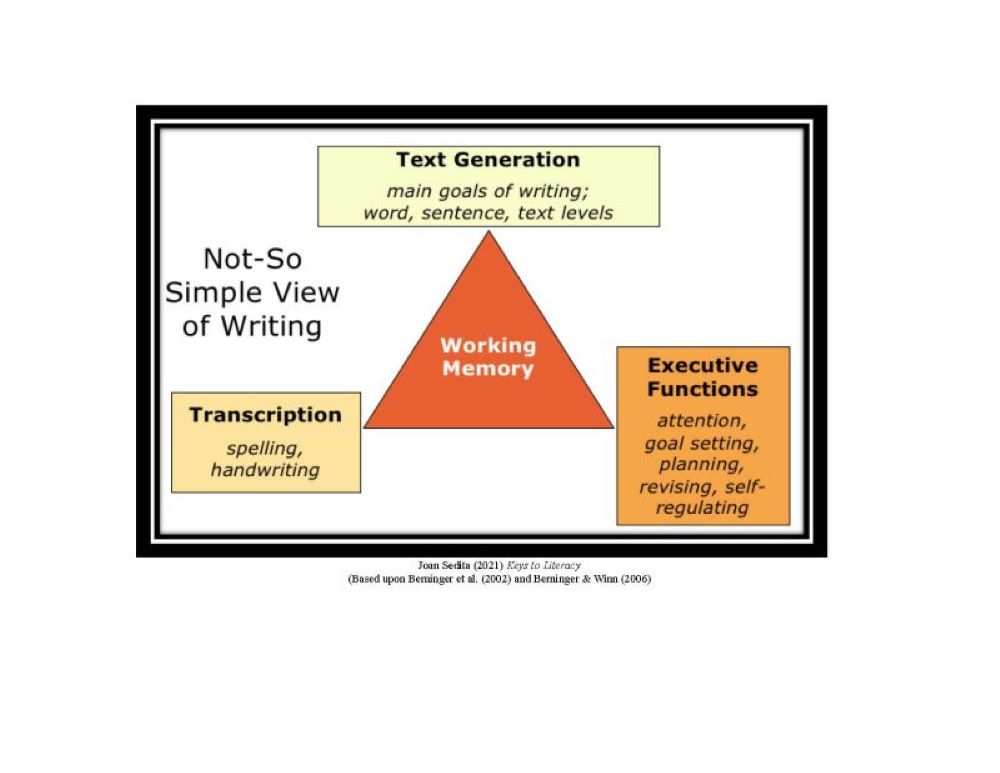You are here
The Interconnectedness of Reading (Scarborough, 2001) and Writing (Sedita, 2019) Ropes
Overview
There is a general agreement among researchers and literacy and language experts that there is a connection between writing and reading. (e.g., Jenkins et al., 2004; Berninger et al., 2002; Abbott & Berninger, 1993; Tierney & Shanahan, 1996; Juel et al., 1986; Juel, 1988, 1983; Loban, 1963; Shanahan, 1984). Researchers such as Pugh et al. 2006, denote the neurological impact that writing and reading have upon the brain, pointing out the overlapping regions of the brain students use when engaging in both literacies. Others, focused on the transference of skills that demonstrate the positive correlation that writing has on reading and that reading has on writing (Weiser & Mathes, 2011; Graham & Hebert, 2011; Tierney & Shanahan, 1991).
The Integral Parts of Literacy and Language Development
Writing and reading together form two integral parts of a child's literacy and language development. Writing is defined as the ability to produce connected text (sentences, paragraphs, and documents), either by handwriting or keyboarding that communicates an idea, a narrative, or information. Reading is defined as the ability to decode written text quickly and accurately and to comprehend what is read (NICHD, 2012). Gough & Tunmer (1986) Simple View of Reading is a visual formula demonstrating that reading has two basic components: decoding and language comprehension. It provides understanding how the decoding-related reading components (phonemic awareness, phonics, and fluency) are connected to meaning-related reading components (vocabulary, comprehension), making it clear that strong reading comprehension cannot occur unless both decoding and language comprehension abilities are strong.
Unraveling the Ropes to Understand the Relationship between Writing and Reading
How does the instructional process for writing relate to instruction in reading or the instructional process in reading relate to writing instruction? Despite accumulating evidence in both reading and writing, the field continues to struggle with how best to ensure that students achieve higher levels of reading comprehension and to elucidate optimal trajectories for writing development (NICHD, 2012). When students receiving remediation make important gains, it is not clear what support(s) are needed for them to build on these skills and maintain them. Despite the need for ongoing research, research findings are encouraging enough that teachers can incorporate current research knowledge and use it in their classrooms with their students (NICHD, 2012). The chart below was designed to help school teams not only understand the relationship between writing and reading, but also help school teams examine, determine, and see how each skill and concept in the ropes overlap, spiral, and are dependent upon the each other to produce skilled writers and readers who can apply and transfer knowledge to current and new ideas, concepts, and contexts.
Back to the Main Page
Previous page: Ground the Work: The "What" and "Why" of Writing
Next page: Process for Developing a Writing Framework at the School Level




Connect With Us





